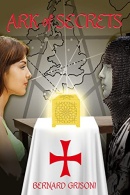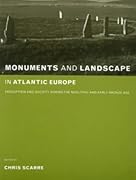<< Text Pages >> Golden Barrow - Round Barrow(s) in England in Wiltshire
Submitted by Andy B on Monday, 15 January 2007 Page Views: 14059
Neolithic and Bronze AgeSite Name: Golden Barrow Alternative Name: Upton Lovell G2e, Upton Lovell G2aCountry: England County: Wiltshire Type: Round Barrow(s)
Nearest Town: Warminster
Map Ref: ST944401
Latitude: 51.160122N Longitude: 2.08146W
Condition:
| 5 | Perfect |
| 4 | Almost Perfect |
| 3 | Reasonable but with some damage |
| 2 | Ruined but still recognisable as an ancient site |
| 1 | Pretty much destroyed, possibly visible as crop marks |
| 0 | No data. |
| -1 | Completely destroyed |
| 5 | Superb |
| 4 | Good |
| 3 | Ordinary |
| 2 | Not Good |
| 1 | Awful |
| 0 | No data. |
| 5 | Can be driven to, probably with disabled access |
| 4 | Short walk on a footpath |
| 3 | Requiring a bit more of a walk |
| 2 | A long walk |
| 1 | In the middle of nowhere, a nightmare to find |
| 0 | No data. |
| 5 | co-ordinates taken by GPS or official recorded co-ordinates |
| 4 | co-ordinates scaled from a detailed map |
| 3 | co-ordinates scaled from a bad map |
| 2 | co-ordinates of the nearest village |
| 1 | co-ordinates of the nearest town |
| 0 | no data |
Internal Links:
External Links:
Bowl Barrow in Wiltshire. In the G2 Upton Lovell barrow were found over 60 perforated bone points, Piggott put forward the explanation that these bone points were attached to garments made from skin or fur, they fringed the lower hem, and also probably round the neck as well, the wearer would have rattled as he walked.
A mocked up version can be seen at Devizes Museum
There were also marcasite cups as well (white iron pyrites) by splitting natural nodules of flint. Also in other barrows small"incense" cups or grape cups,such as the "Aldbourne Cup" have been found, an example can be found here of a grape cup, this one was found at Upton Lovell G2, these also are occasionally perforated.
In Ann Woodward's British Barrows (a matter of life and death) there is a small section entitled shamanic cults. This she attributed to the finds found in some of the barrows in the Wessex culture.
It was put forward that not only had herbs been burnt in them, but also psychoactive herbs such as cannabis. As to the truth of this we will never know, unless such substances can be analysised. The pots are decorated in a similar geometric fashion to the gold and bronze objects found in other graves, and also have holes on either side of the rim, for hanging up.
Small bronze knives are also found within the graves, and these could have been used for the preparation of such herbs, we have no way of knowing what plants or indeed barks of trees were used. Iron pyrite or flints used for striking a light have been found in the barrow assemblages.
There are also of course the small beads of glass, amber or jet that have been found as well, these are often found singularly or in small groups, not necessarily belonging to a necklace (although magnificient necklaces such as the one found in the "golden Barrow"s how that such things were worn) but they could well be part of the shaman's magic tricks that he carried around in a small pouch.
These finds are attributed to early bronze age, and it is the arrival of the "beaker" cup people which perhaps signifies an end to this particular culture. These cups having been interpreted as holding alcohol and symbolic of a different type of inebriation!
Magical properties of jet as told by Pliny the Elder;- from the later iron age:
When it is burnt it gives off a smell like that of sulphur. What is remarkable is that it is ignited by water and quenched by oil. The kindling of jet drives off snakes and relieves suffocation of the uterus. its fumes detect attempts to simulate a disabling illness or a state of virginity. Moreover, when thoroughly boiled with wine it cures toothache and, if combined with wax, scrofulous tumours. The Magi are said to make use of it in what they call `divination by axes'; and they assert it will not burn away completely if a wish is destined to come true." (Loeb, Book XXXVi, 34, 141).
Barrows are poorly recorded, a lot were damaged in the 19th century by over enthusiastic vicars and men who had time on their hands to fund excavations, these so called excavations taking up an afternoon or so.
So what would now be useful as evidence is lost forever, and barrows themselves are always under threat from ploughing. What does remain, are the larger barrows, such as Ashen Hill at Priddy, and some of the large barrows on Stonehenge, the ones at Upton Lovell no longer exist they were excavatated by Cunnington, although he produced beautiful drawings of his finds.
There are also four barrows at Aldbourne.
Source: Northstoke.blogspot.com.
Note: William Cunnington - Commemorating 200 years of one of Britain's first archaeologists
You may be viewing yesterday's version of this page. To see the most up to date information please register for a free account.
Do not use the above information on other web sites or publications without permission of the contributor.
Nearby Images from Geograph Britain and Ireland:

©2011(licence)

©2011(licence)

©2016(licence)

©2007(licence)

©2011(licence)
The above images may not be of the site on this page, they are loaded from Geograph.
Please Submit an Image of this site or go out and take one for us!
Click here to see more info for this site
Nearby sites
Key: Red: member's photo, Blue: 3rd party photo, Yellow: other image, Green: no photo - please go there and take one, Grey: site destroyed
Download sites to:
KML (Google Earth)
GPX (GPS waypoints)
CSV (Garmin/Navman)
CSV (Excel)
To unlock full downloads you need to sign up as a Contributory Member. Otherwise downloads are limited to 50 sites.
Turn off the page maps and other distractions
Nearby sites listing. In the following links * = Image available
1.3km W 280° Corton Long Barrow Long Barrow (ST9307740336)
1.8km ESE 119° Sherrington Motte Artificial Mound (ST96003923)
2.2km E 94° Codford St Peter Cross* Ancient Cross (ST96583993)
2.5km NNE 26° Upton Great Barrow* Round Barrow(s) (ST955423)
2.6km ESE 110° Sherrington Long Barrow* Long Barrow (ST9687239179)
3.9km E 83° Codford Circle Hillfort (ST98254056)
4.2km SSW 198° Grim's Ditch 3 (Wiltshire) Misc. Earthwork (ST931361)
4.2km NNE 22° Knook Castle Hillfort (ST96004400)
4.5km NNW 333° West Hill long barrow Long Barrow (ST924441)
5.3km NW 321° Scratchbury Camp* Hillfort (ST911442)
6.0km NW 323° Middle Hill* Round Barrow(s) (ST908449)
6.1km NNW 343° Norton Bavant 13 Long Barrow (ST92594595)
6.1km WNW 287° Sutton Common Henge* Henge (ST88544194)
6.4km NW 313° King Barrow (Warminster) Long Barrow (ST8975044477)
6.4km NNW 336° Norton Bavant 14 Long Barrow (ST91854596)
6.4km NW 307° Boreham Mill Barrows Round Barrow(s) (ST89274400)
6.7km N 358° Boles Barrow* Long Barrow (ST9420346771)
7.0km NW 319° Battlesbury bowl barrow 3 Round Barrow(s) (ST898454)
7.0km NW 319° Battlesbury hillfort Barrows Round Barrow(s) (ST898454)
7.0km NW 319° Battlesbury Bowl Barrow 1 Round Barrow(s) (ST89804545)
7.1km NW 319° Battlesbury Bowl barrow 2 Round Barrow(s) (ST89774544)
7.1km WNW 288° Robin Hood's Bower Ancient Village or Settlement (ST87684234)
7.2km NW 320° Battlesbury Camp* Hillfort (ST898456)
7.7km ESE 121° Bilbury Rings Hillfort (SU01013620)
7.7km WSW 249° Pertwood Down Long Barrow Long Barrow (ST872374)
View more nearby sites and additional images






 We would like to know more about this location. Please feel free to add a brief description and any relevant information in your own language.
We would like to know more about this location. Please feel free to add a brief description and any relevant information in your own language. Wir möchten mehr über diese Stätte erfahren. Bitte zögern Sie nicht, eine kurze Beschreibung und relevante Informationen in Deutsch hinzuzufügen.
Wir möchten mehr über diese Stätte erfahren. Bitte zögern Sie nicht, eine kurze Beschreibung und relevante Informationen in Deutsch hinzuzufügen. Nous aimerions en savoir encore un peu sur les lieux. S'il vous plaît n'hesitez pas à ajouter une courte description et tous les renseignements pertinents dans votre propre langue.
Nous aimerions en savoir encore un peu sur les lieux. S'il vous plaît n'hesitez pas à ajouter une courte description et tous les renseignements pertinents dans votre propre langue. Quisieramos informarnos un poco más de las lugares. No dude en añadir una breve descripción y otros datos relevantes en su propio idioma.
Quisieramos informarnos un poco más de las lugares. No dude en añadir una breve descripción y otros datos relevantes en su propio idioma.